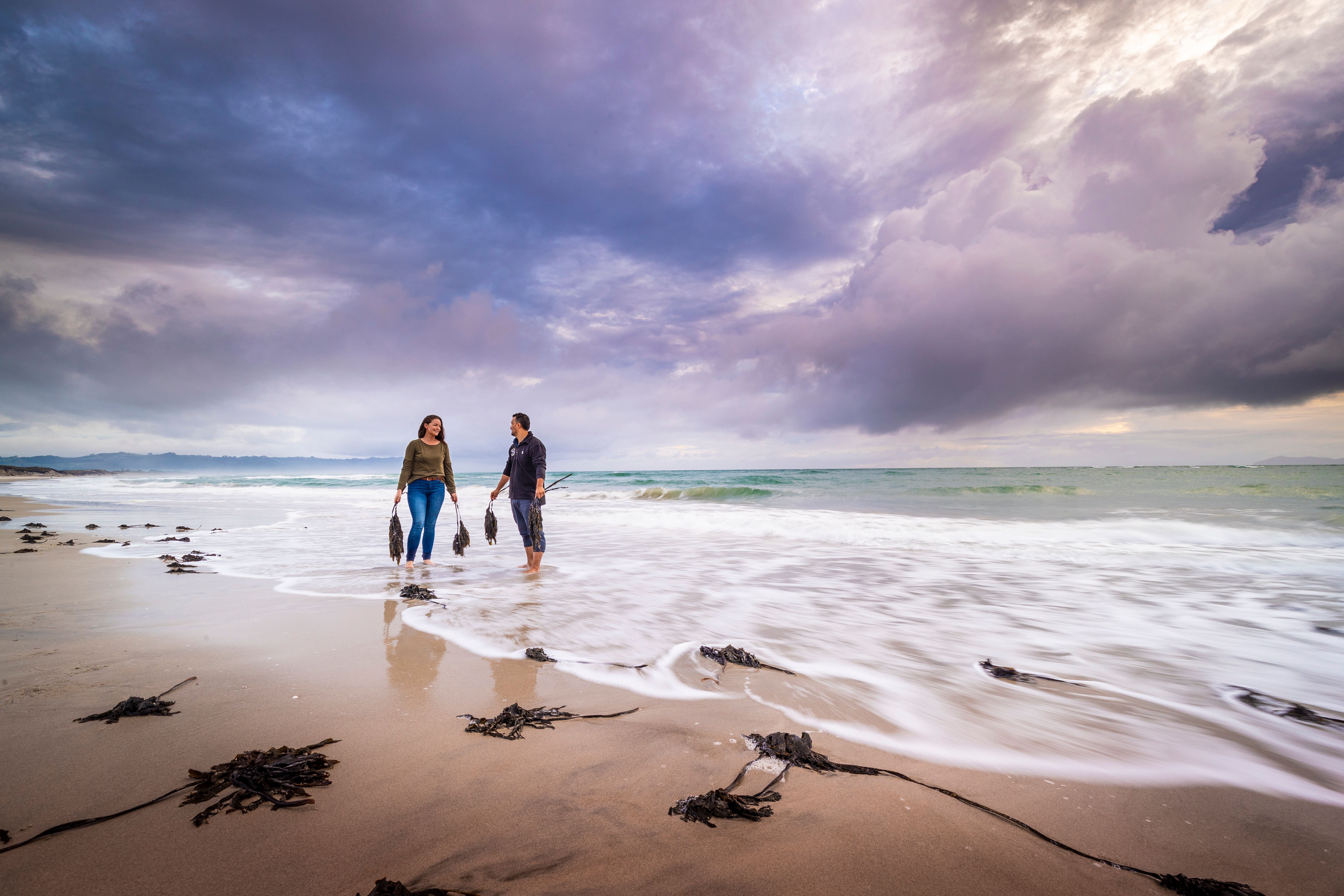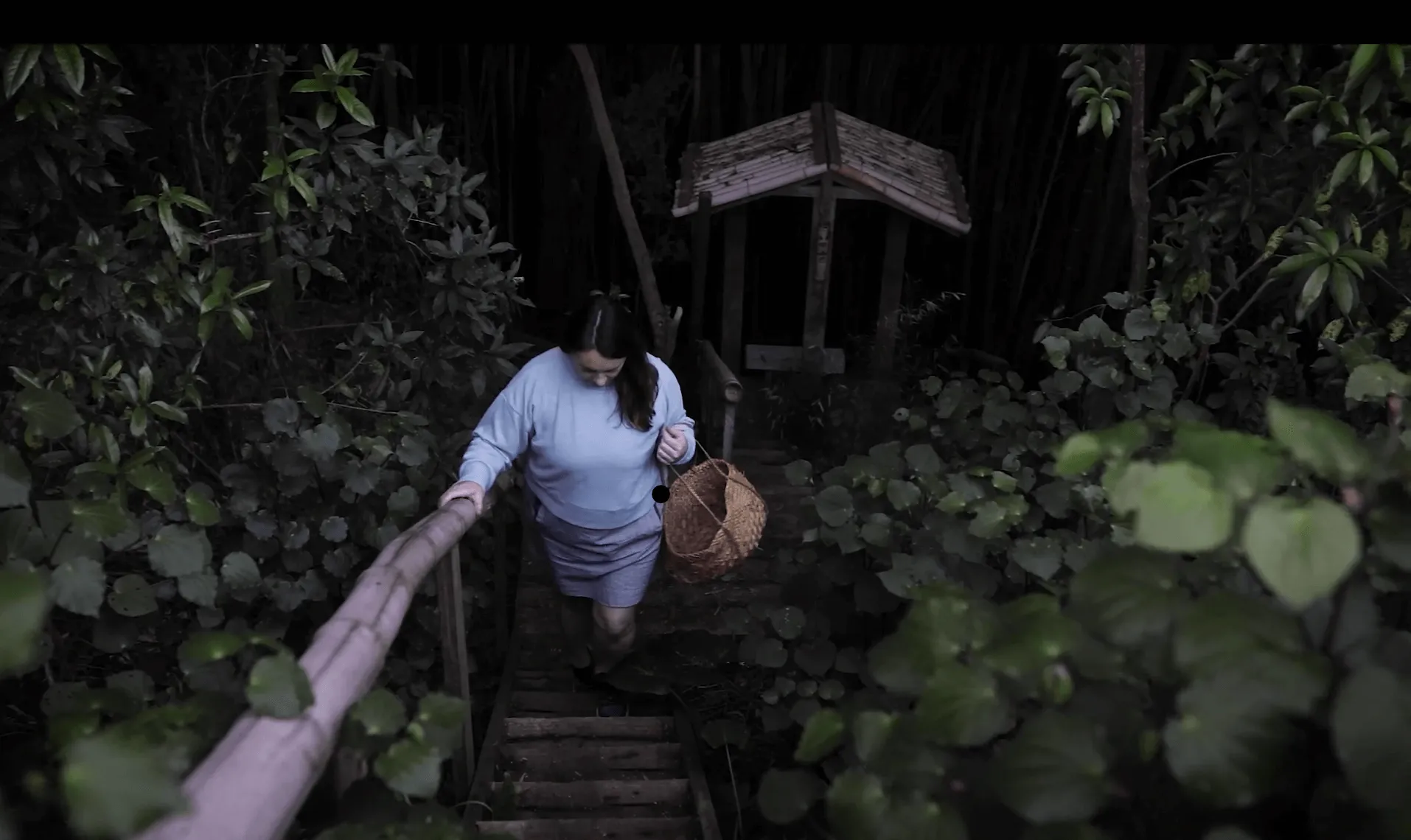
Keri Hulme
Keri Hulme (Kāi Tahu, Kāti Māmoe) was born on 9 March 1947 in Christchurch. The eldest of six children, her father John’s family came to Aotearoa New Zealand from Lancashire, England, and her mother Mary’s family was of Orkney Scots and Māori heritage. Although she didn’t grow up immersed in Māori culture, Keri was drawn to it, creating a Māori dictionary from a very early age, and adding to it over the decades.

“I fish for ideas. I fish for characters and dreams. I use words as both bait and hook, and net. One way or the other, I fish a lot.”
Her father died when she was 11, and her mother rearranged the porch of their house to create a study for Keri to write in. Fascinated with writing from a young age, she wrote poetry, composed short stories, and rewrote Enid Blyton stories to reflect her own point of view. The family spent their holidays at Moeraki, which Keri identified as her tūrangawaewae-ngākau – “the standing place of my heart”.
Keri began studying an honours degree in law at the University of Canterbury in 1967, but left after four terms, preferring to go tobacco picking, and writing. In 1972, supported by her family, she began to write full-time, but returned to work nine months later. She had a range of jobs, including as a cook in a fish and chip shop, a winder at a woollen mill, a mail delivery person, a pharmacist’s assistant, and as a proof-reader and journalist at the Greymouth Evening Star. She also worked as an assistant television director on three iconic New Zealand shows – Country Calendar, Dig This, and Play School.
Keri published stories under the pen name Kai Tainui, and received Literary Fund grants in 1973, 1977, and 1979. She was also a visiting poet at the East-West Centre in Hawaii. She held the 1977 Robert Burns Fellowship and became the writer-in-residence at the University of Otago in 1978.
In 1973, Keri won a Crown land ballot for a plot of land in the remote settlement of Ōkarito, in south Westland, on the coast of the South Island. She built an octagonal house on the land and lived there for nearly 40 years, fishing for whitebait, painting, and enjoying a fine glass of Scotch along with her pipe.
Writing the bone people took Keri over 12 years of dreaming, crafting, and persistence. New Zealand publishers either rejected it outright or demanded major editing, and she declared she would rather have the book “embalmed in Perspex” than reworked. It was eventually published by the Spiral Collective, a small feminist press which created an initial print run of 2,000 copies, typeset by students from the Victoria University Students’ Association. The Spiral Collective worked with Hodder & Stoughton to co-publish larger quantities as the book’s popularity grew across Aotearoa New Zealand.
It won the Booker Prize in 1985, the first debut novel ever to win the award, and the first New Zealand book. When the winner was announced, Keri was on a book tour in the USA, and heard the news via telephone. “Bloody hell!” she said. Members of the Spiral Collective, Irihapeti Ramsden, Marian Evans, and Miriama Evans walked up to collect the award. Marian recalls how “no-one knew what to make of Miriama’s and Irihapeti’s karanga” as they made their way up to the stage. They were not permitted to talk.
the bone people sold over a million copies and has been translated into 12 languages so far. It has remained in print and on the bestseller lists in Aotearoa New Zealand since its publication. It also won the Pegasus Prize for Māori Literature, and the 1984 New Zealand Book award for fiction.
The book tells the story of Kerewin Holmes, a woman of mixed Māori and Pākehā heritage, Joe, a Māori man, and his foster son Simon, whom he found after a shipwreck. The book’s detailed violence against Simon by Joe was called ‘confronting’ by critics, but Keri said she wrote it as a story that New Zealanders could relate to, to help her family learn more about their Māori heritage, and in the hope that people might look more closely at the damage violence against children can cause.
Keri used aspects of her own life in creating the character of Kerewin, a painter who doesn’t paint.
“The things of me that I used for Kerewin are her fishing, her art, her music, her natural neuterhood. Her cigars and pipes, and her propensity to collect things.”
Many New Zealanders said it changed their lives and enriched them. It stretched their minds and gave them a sense of place in the world. Author Joy Cowley said:
“Keri Hulme sat in our skulls while she wrote this work… she has given us, us.” the bone people became a primary text in English studies in Aotearoa New Zealand, Canada, and Europe.
The 1987 documentary Kai Pūrākau – The Storyteller by Gaylene Preston, featured Keri in Ōkarito, musing on her creative process, and the inspiration she drew from the land and the sea.
“I fish for ideas. I fish for characters and dreams. I use words as both bait and hook, and net. One way or the other, I fish a lot,” she said.
Her success enabled her to travel with her mother around the world.
“the bone people took me and my family to places we never expected to go… and made possible a lifestyle which suits me absolutely.”
Along with two unfinished novels, BAIT and On the Shadow Side, Keri published three poetry collections, two collections of short stories and poetry, Homeplaces: Three Coasts of the South Island of New Zealand (an autobiography of three of her favourite places, with photography by Robin Morrison), and co-edited Te Whenua, Te Iwi/The Land and the People with Jock Phillips. She also wrote the libretto of Ahua – the story of Moki, an opera commissioned by the Christchurch City Choir.
Keri Hulme moved from her beloved Ōkarito in 2011 and died in Waimate on 27 December 2021. She was 74. Her ability to find her unique voice from Aotearoa New Zealand and share its creativity was her gift to the world.
Explore the Legacy Project
.jpg)
Explore the Legacy Project
.jpg)
Explore the Legacy Project
.jpg)


.jpg)


